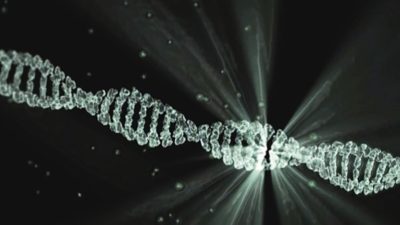2310555 GENE ENG LAB

| Course Number | 2310555 | |
|---|---|---|
| Course Credits | 2 (0-6-2) | |
| Course Abbrviation | GENE ENG LAB | |
| Course Title (TH) | ปฏิบัติการพัธุวิศวกรรม | |
| Course Title (EN) | Genetic Engineering Laboratory | |
| Responsible Unit | Faculty of Science, Department of Biochemistry | |
| Type of Course | International Course | |
| Semester | Intl 2nd semester | |
| Academic Year | 2024 | |
| Course Coordinator | ||
| Measurement Method | ||
| Type of Course | Semester Course | |
| Course Condition | COREQ 2310454 or 2310554 or Consent of Faculty | |
| Course Status | ||
| Instructors / staffs | ||
| Enrollment conditions | None | |
| Degree level | Bachelor | |
| Related curricular | Bachelor of Science in Biotechnology (2562) | |
| Bachelor of Science in Biotechnology (2567) | ||
| Course description (TH) | เทคนิคเกี่ยวกับรีคอมบิแนนท์ดีเอ็นเอ การสกัด การตัด และต่อดีเอ็นเอ การทรานสฟอร์มและการตรวจหายีนที่สนใจ | |
| Course description (EN) | Recombinant DNA technology; extraction, cutting and joining of DNA, transformation; screening of genes of interested genes | |
| Curriculum mapping | / | CU-1.1: Behavioral Objectives Possessing well-rounded knowledge |
| / | CU-1.2: Possessing in-depth knowledge | |
| / | CU-2.1: Being moral and ethical | |
| / | CU-2.2: Having an awareness of etiquette | |
| / | CU-3.1: Being able to think critically | |
| / | CU-3.2: Being able to think creatively | |
| / | CU-3.3: Having skills in problem solving | |
| / | CU-4.1: Having professional skills | |
| CU-4.2: Having communication skills | ||
| CU-4.3: Having skills in information technology | ||
| / | CU-4.4: Having mathematical and statistical skills | |
| CU-4.5: Having management skills | ||
| / | CU-5.1: Having an inquiring mind | |
| / | CU-5.2: Knowing how to learn | |
| / | CU-5.3: Having leadership qualities | |
| CU-5.4: Maintaining well-being | ||
| CU-5.5: Being community-minded and possessing social responsibility | ||
| CU-5.6: Sustaining Thainess in a globalized world | ||
| subPLO1.1 Explain biotechnology knowledge in practice. | ||
| / | subPLO1.2 Analyze biotechnology knowledge in practice. | |
| subPLO1.3 Apply biotechnology knowledge in practice. | ||
| / | PLO2 Employ biotechnology-related technology and scientific tools. | |
| PLO3 Communicate effectively in English within the Biotechnology field. | ||
| / | PLO4 Demonstrate behavior that aligns with ethical principles, moral values, and professional ethics. | |
| PLO5 Demonstrate social responsibility, courage, and creativity. | ||
| Course learning outcome (CLO) | 1. Describe and conduct DNA extraction and PCR. | |
| 2. Describe and conduct DNA cloning. | ||
| 3. Describe and conduct DNA site-directed mutagenesis. | ||
| 4. Describe and conduct RNA extraction and Reverse-Transcription PCR (RT-PCR). | ||
| 5. Write a report; analyze, interpret, conclude, and discuss results; present results. |
| # | Date | Time | Learning content | Instructor | CLO | Remark |
|---|---|---|---|---|---|---|
| 1 | Introduction of genetic engineering behavioral objectives | • Describe and conduct DNA extraction and PCR • Write a report; analyze, interpret, conclude, and discuss results; present results. | ||||
| 2 | Introduction of genetic engineering behavioral objectives | • Describe and conduct DNA extraction and PCR • Write a report; analyze, interpret, conclude, and discuss results; present results. | ||||
| 3 | DNA cloning | • Describe and conduct DNA cloning • Write a report; analyze, interpret, conclude, and discuss results; present results. | ||||
| 4 | DNA cloning | • Describe and conduct DNA cloning • Write a report; analyze, interpret, conclude, and discuss results; present results. | ||||
| 5 | DNA cloning | • Describe and conduct DNA cloning • Write a report; analyze, interpret, conclude, and discuss results; present results. | ||||
| 6 | DNA cloning | • Describe and conduct DNA cloning • Write a report; analyze, interpret, conclude, and discuss results; present results. | ||||
| 7 | Site-directed mutagenesis | • Describe and conduct DNA site-directed mutagenesis • Write a report; analyze, interpret, conclude, and discuss results; present results. | ||||
| 8 | Site-directed mutagenesis | • Describe and conduct DNA site-directed mutagenesis • Write a report; analyze, interpret, conclude, and discuss results; present results. | ||||
| 9 | Site-directed mutagenesis | • Describe and conduct DNA site-directed mutagenesis • Write a report; analyze, interpret, conclude, and discuss results; present results. | ||||
| 10 | RNA extraction | • Describe and conduct RNAextraction and Reverse-TranscriptionPCR (RT-PCR) • Write a report; analyze, interpret, conclude, and discuss results; present results. | ||||
| 11 | Reverse-Transcription PCR or RT-PCR | • Describe and conduct RNAextraction and Reverse-TranscriptionPCR (RT-PCR) • Write a report; analyze, interpret, conclude, and discuss results; present results. | ||||
| 12 | Reverse-Transcription PCR or RT-PCR | • Describe and conduct RNAextraction and Reverse-TranscriptionPCR (RT-PCR) • Write a report; analyze, interpret, conclude, and discuss results; present results. | ||||
| 13 | ||||||
| 14 | ||||||
| 15 | ||||||
| 16 |
| Teaching/learning media | - | ||
| Communication channels / LMS | |||
| Type | Channel identifier / URL | Remarks | |
| Learning Management System (LMS) | |||
| Assessment method | Level of assessment | Related CLO | Percentage |
| Grading | Grading System | Letter Grad (A-F) | |
| Grading method | Norm-referenced Grading (อิงกลุ่ม) | ||
| Minimum Passing Level (MPL) | 0 | ||
| Reading list | |||
| Course evaluation | Course evaluation system | – | |
| Details of improvement from previous evaluation | – | ||
| Course quality control | Responses to complaints / petitions from students | – |
